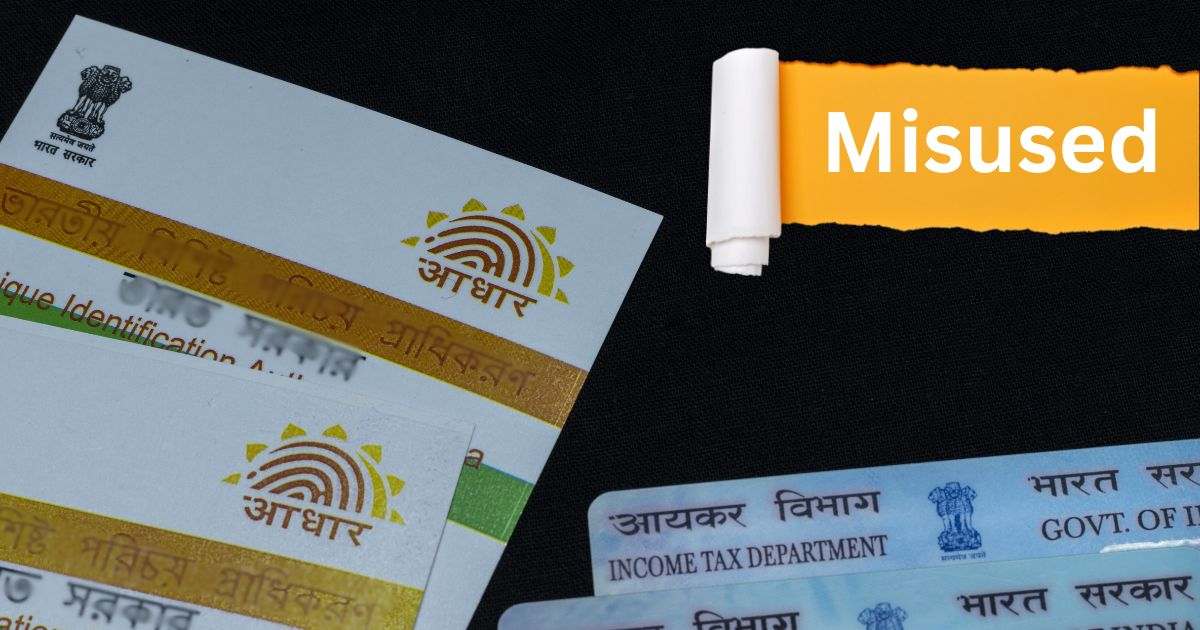Aadhaar Law & Digital Fraud · 4 min read
Aadhaar Misused for Loans? Know Your Legal Rights
Learn how misuse of Aadhaar in loan approvals violates the Aadhaar Act and IT Act, and how victims can report and seek compensation through UIDAI and courts.

When Aadhaar Use Becomes Illegal
Aadhaar is the Indian unique-identity administration created to make it simple to avail of all public welfare programs and create an accessible electronic identity for Indian citizens. Nonetheless, Aadhaar has in the past been abused by the availability of it in the hands of private establishments, especially in digital lending.
A lot of people have complained that they’ve received loans taken in their name without consent and without knowledge, only through their Aadhaar numbers. The process of e-KYC (Know Your Customer) through Aadhaar is highly regulated, and infringement of the process — clearly outlined in law — is an offence under the Aadhaar Act, 2016.
In its major ruling in Justice K.S. Puttaswamy (Retd.) vs Union of India (2018), the Supreme Court of India gave definite restrictions to the operation of Aadhaar, especially by private companies. The judgment restricted Aadhaar as a source of authentication by private players and reinforced the requirement of individual consent.
In the context of loan approvals, the practice of using Aadhaar without consent may be considered illegal because using Aadhaar in a way not specified by the Aadhaar Act, 2016, is unlawful.
Section 29 of the Aadhaar Act
The Aadhaar Act, 2016, in Section 29 categorically specifies the prohibitions on sharing, disclosure, and use of Aadhaar numbers and related identity information.
In sub-section (2), it is mentioned that no Aadhaar number or core biometric data attained or generated under this Act shall be shared with any person, whatever the reason is, unless otherwise provided in this Act.
Specifically, Section 29(3) does not allow the publication, display, or posting publicly of the Aadhaar number of any person.
Such provisions are often ignored by private lenders and digital NBFCs (Non-Banking Financial Companies) when they onboard borrowers using e-KYC through Aadhaar authentication, especially when done through third-party apps.
In case the biometric data or Aadhaar number is used or even stored without the knowledge or consent of the person, it is a punishable offence under Section 37 and Section 40 of the Aadhaar Act, and even under the Information Technology Act, 2000.
How to Raise a UIDAI Complaint
If you suspect that your Aadhaar was used to take a loan you didn’t apply for, act quickly. You can address the complaint online via the Unique Identification Authority of India (UIDAI) at https://resident.uidai.gov.in/ or call the toll-free number 1947.
Another option is to email help@uidai.gov.in with a clear explanation of your complaint, including evidence such as:
● Masked Aadhaar number
● Screenshots of unverified loan entries in credit reports
● Messages from lenders
You can also file a complaint with the Data Protection Officer of UIDAI through a written representation, especially in the case of repeated violations. UIDAI can investigate and direct offending financial institutions to stop operations that violate Aadhaar provisions.
Cyber Complaint Add-On
Since most Aadhaar-related frauds occur online — through mobile apps and malicious websites — lodging a cybercrime report is equally important. Complaints can be filed on the National Cyber Crime Reporting Portal at https://cybercrime.gov.in.
Victims should explain how the Aadhaar was compromised, including whether an OTP was used, and submit:
● Screenshots of apps
● Emails
● Loan SMS messages
Cyber police can investigate backend systems and APIs that may have accessed Aadhaar data illegally. These complaints are important, especially when the fraud leads to monetary loss or reputational harm. Filing such a complaint also creates a legal record if you plan to claim compensation or initiate civil/criminal action.
Compensation Possibilities
Aadhaar abuse victims have a right to seek redress under the law.
● Section 43A of the Information Technology Act allows for compensation if personal data is mishandled or leaked due to negligence.
● Section 47 of the Aadhaar Act empowers UIDAI to file complaints in cases of misuse.
An individual can also claim damages in a consumer court or civil court if they were in mental agony or suffered financial loss.
A fraudulent loan taken using your Aadhaar may affect your CIBIL score and creditworthiness. In addition to getting the loan cancelled, the wronged person may seek compensation for damage caused to their financial image. It is crucial to keep all documents and correspondence with the concerned bank or NBFC.
Conclusion
The Aadhaar system was never meant to be misused by unethical lending platforms. By employing Aadhaar without authorisation, even with apparent consent, private institutions are not only violating the Aadhaar Act — they are infringing upon the fundamental right to privacy under Article 21 of the Constitution.
Victims of such misuse should act swiftly — report the issue to UIDAI, lodge a cybercrime complaint, and seek legal recourse if necessary.
As digital frauds rise, citizens must remain vigilant and assert their rights when Aadhaar is misused without authority. The integrity of India’s digital identity ecosystem depends on awareness and enforcement.



